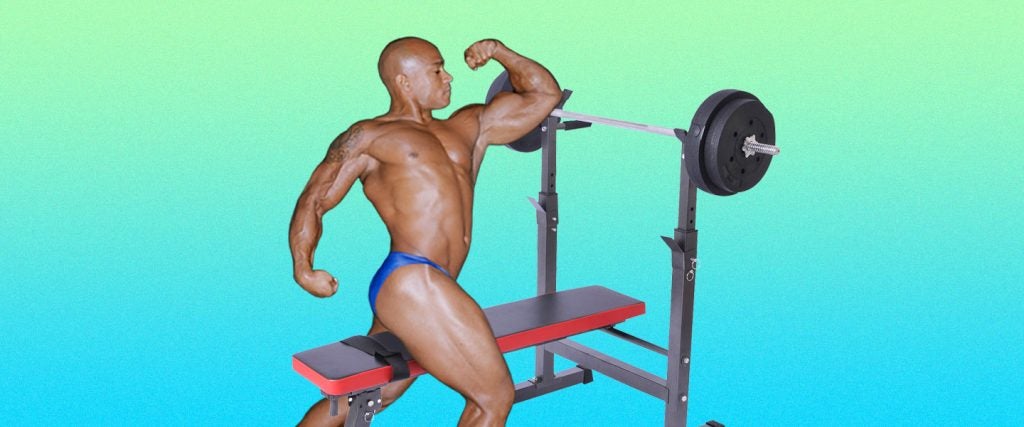For a very long time now, “how much can you bench?” has functioned as a litmus test, the answer determining just how much power you possess in those muscles of yours — chest or otherwise. If nothing else, it serves as a sinewy shorthand, painting a portrait of strength that’s universally understood. And yet, aside from the pecs (mostly) and the shoulders and triceps (to a lesser extent), the bench press isn’t exactly packing on muscle throughout the rest of your body.
In fact, I can tell you from personal experience that by emphasizing the bench press over other lifts, you definitely won’t look as balanced as you would if you gave equal time and effort to all your lifts — especially if you’re not working your legs and biceps as much as your chest.
But doesn’t the bench press work the biceps?
Not in any sense that would cause a reasonable person to bench press during their bicep day.
Again, the muscles that are directly targeted by the bench press are the chest, triceps and anterior deltoids, which are essentially the front portion of the shoulders. Some other muscles are secondarily or tertiarily involved, but that’s more of a byproduct of the weightlifting movement as opposed to its direct focus. In reality, any participation by the biceps is largely superficial, as they’re not contributing relevantly to you controlling the weight during its descent toward your chest or when pressing the barbell (or dumbbells) back to their apex.
If anything, noticing your biceps in a chest-targeting movement is a bad thing, as it’s usually a result of the bicep tendon being stressed, typically because your grip on the weight bar is either too wide or too narrow. This is also one of the reasons why it’s important to be able to decipher between muscle strain and injury pain — just because you feel like there’s some sort of physical aggravation being caused by your exercise doesn’t mean that the discomfort is automatically benefitting your muscles.
A classic example of this is evident in the chest-fly exercise. Studies show that the activation of the biceps during the chest fly is greater than their activation during the bench press throughout nearly all phases of the lift, including the ascent and the descent.
You have to remember, though, that your biceps are only acting as a stabilizing force during the chest fly; they’re never being moved through any range of motion, and they’re neither being lengthened nor shortened against a constant resistance. This is a dead giveaway as to the inefficiency of the bench press as a bicep exercise. Muscles unlock the proverbial gains as they’re being trained throughout their full range of motion. If more activation is being provided to the biceps during a stability exercise than a true range-of-motion exercise, it pretty much tells the story of how inadequate the bench press is for your biceps.
What should I be doing for my biceps then?
There are many exercises that serviceably incorporate your biceps into their movement patterns, including chin-ups, pull-ups and any of the many varieties of curls. To repeat some of what I said above, the critical element to an efficient bicep exercise is that it gets the full range of motion out of the hinge joint in the elbow, and safely maximizes the tension placed on the bicep.
The bench press isn’t just hard-pressed to do this — it’s virtually impossible.

